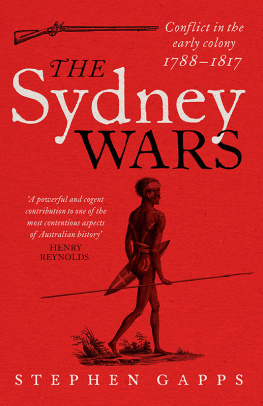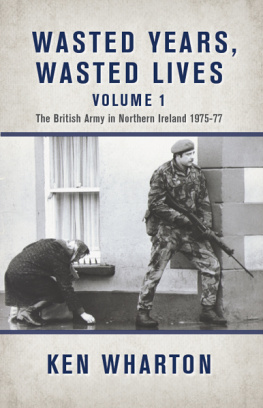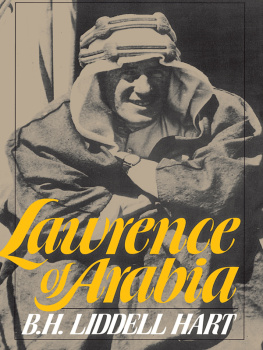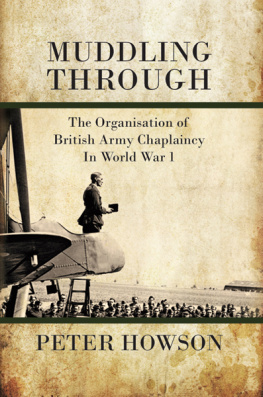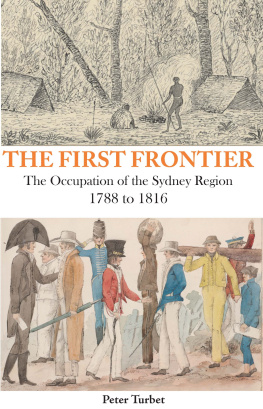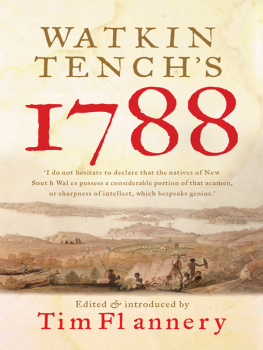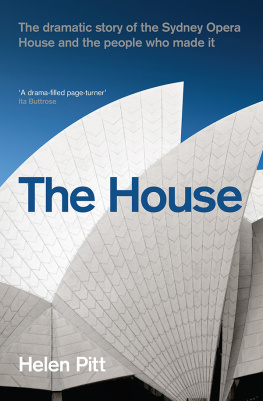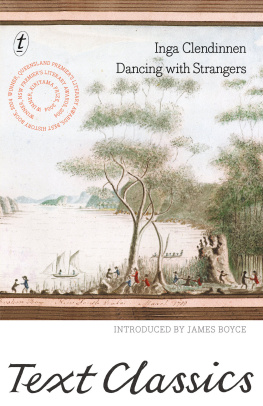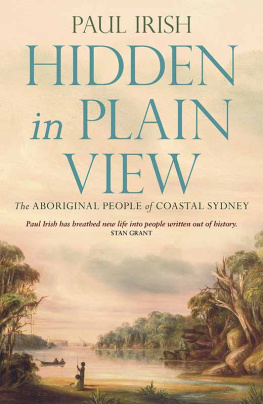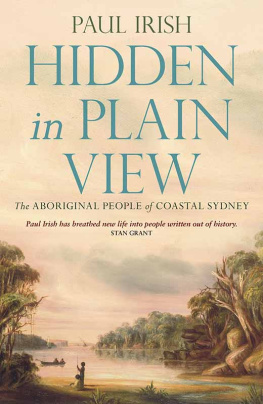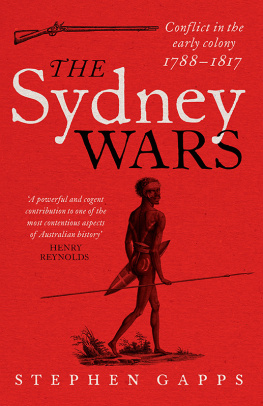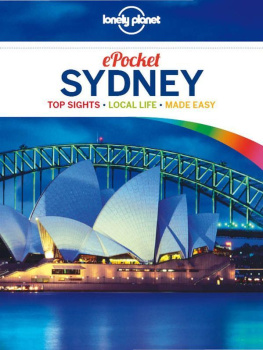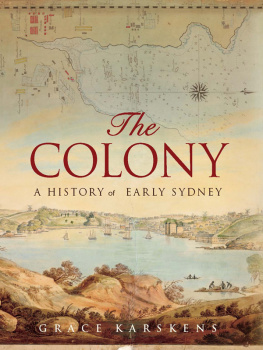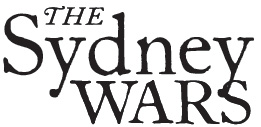
STEPHEN GAPPS is a Sydney-based historian with research interests in public history and early colonial Sydney. He has written extensively on historical re-enactments, military history and the commemoration of the past. He is currently a curator at the Australian National Maritime Museum and has also worked as a consultant and academic historian. In 2011 Stephen won a NSW Premiers History Award for Cabrogal to Fairfield City: A History of a Multicultural Community, and in 2017 he was awarded the State Library of New South Waless Merewether Fellowship. The Sydney Wars is his fourth book.
A NewSouth book
Published by
NewSouth Publishing
University of New South Wales Press Ltd
University of New South Wales
Sydney NSW 2052
AUSTRALIA
newsouthpublishing.com
Stephen Gapps 2018
First published 2018
10 9 8 7 6 5 4 3 2 1
This book is copyright. Apart from any fair dealing for the purpose of private study, research, criticism or review, as permitted under the Copyright Act, no part of this book may be reproduced by any process without written permission. Inquiries should be addressed to the publisher.
ISBN:9781742232140 (paperback)
9781742244242 (ebook)
9781742248660 (ePDF)

A catalogue record for this book is available from the National Library of Australia
Design Josephine Pajor-Markus
Cover design Luke Causby, Blue Cork
Cover image Norou-gal-derri savanant pour combattre 1802 (Nicholas-Martin Petit). Voyage de dcouvertes aux terres australes : xecut par ordre de sa Majeste, lEmpereur et Roi, sur les corvettes le Geographe, le Naturaliste et la Goelette le Casuarina, pendant les annees 1800, 1801, 1802, 1803 et 1804; publi par dcret imperial, ... / et rdig par M. F. Pron. State Library of New South Wales
Printer Griffin Press
All reasonable efforts were taken to obtain permission to use copyright material reproduced in this book, but in some cases copyright could not be traced. The author welcomes information in this regard.
This book is printed on paper using fibre supplied from plantation or sustainably managed forests.

CONTENTS
ACKNOWLEDGMENTS
This book really began back in Western Sydney in the 1970s when I wanted to know why I walked to school along a road named Bungarribee and why the place I lived in had once been called The Blacks Town. I am grateful to my father for introducing me to local history in Western Sydney.
Thanks to Brett Kenworthy for regularly reminding me there was a lack of scholarship around early colonial military history in Australia.
I thank Karen Pymble for research assistance and Alex Gaffikin for help with tabulating data and indexing.
Thanks to Josephine Pajor-Markus at NewSouth Publishing for the maps and Luke Causby at Blue Cork for the cover design.
A big thank you to editor Penny Mansley for her thoroughness and to Phillipa McGuinness and Paul OBeirne from NewSouth Publishing for their faith in the book and support in publication.
I am very grateful for the State Library of New South Waless Merewether Fellowship award for 2017. The librarys wonderful collections have been crucial in researching and writing this book.
Thanks to colleagues who have generously shared their knowledge and time with me, in particular Bruce Baskerville, Ray Kerkhove, Paul Irish, Michael Bennet, Mark Dunn, Beau James and Helen Anu.
And a huge thanks to friends and family who have put up with me during this project, including the crew at Jims Gym; Miranda, Jim, Beatrix, Shadie, Erik and Francis; and my sister, Suzanne, my mother, Barbara, and my grandfather Bill Baldwin (who at the time of writing is 104 years old and still going strong).
WARNING Aboriginal and Torres Strait Islander people should be aware that this book contains words and descriptions written by non-Indigenous people in the past that may be confronting and would be considered inappropriate today.
It also contains the names of deceased people, and graphic descriptions of historical events that may be disturbing to some readers.
CONVERSIONS
1 inch | 2.5 centimetres |
1 foot | 0.3 metres |
1 yard | 0.9 metres |
1 mile | 1.6 kilometres |
1 rood | 0.1 hectares |
1 acre | 0.4 hectares |
1 ounce | 28.3 grams |
1 pound | 0.5 kilograms |
1 gallon | 3.8 litres |
1 bushel (corn) | 25.4 kilograms |
INTRODUCTION
A SAVAGE AND UNFEELING ENEMY
The year 1804 was a particularly violent one for the sixteen-year-old colony of New South Wales. In March a convict uprising at the Castle Hill Government Farm led to what has become known after a 1798 Irish defeat to the British in Ireland as the Battle of Vinegar Hill. The battle occurred on the road from Parramatta to Windsor and was fought between a detachment of the New South Wales Corps, supported by militia forces, and around 250 hastily armed, mainly Irish, escaped convicts. The convicts broke out of the government farm and gathered weapons with the intention to march on Windsor, where they planned to gather a force of over 1000 men, take Sydney, capture ships and sail back to support rebellion in Ireland. Major George Johnstons force, of around 60 soldiers and militia, suffered no casualties in the short period, perhaps 15 minutes, of fighting, while 15 convicts were killed and an unknown number wounded on or near the battlefield. Nine of the convict rebel ringleaders were later executed. The battle took place at present-day Rouse Hill, a suburb in northwestern Sydney. While the name of the area was later changed from the unpleasant reminder, Vinegar Hill, to the local landowners name, Rouse Hill, a shopping centre was recently named after the battle .
In the early 1800s the military garrison in the colony of New South Wales was concerned with security against attacks by foreign
This savage enemy was not only threatening what were then the outlying settlements on the fringes of colonial Sydney along the relatively isolated reaches of the Hawkesbury River. They also conducted raids on crops and farms and ambushes on unwary travellers acts of depredation and cruelty on the outskirts of the main settlements of Sydney and Parramatta. The northern shore of the Lane Cove River, for example, had been precarious for settlers, with regular reports of attacks, since 1794, when the first attempts were made to log timber and land grants were awarded in what later became the suburb of Lane Cove, on the lower north shore of Sydney Harbour. In May 1797 an officer of the marines and long-term chronicler of the first years of the colony, Captain David Collins, wrote that Aboriginal people were exceedingly troublesome to the settlers in Lane Cove, burning a house and killing some hogs belonging to one of them. By 1800 a stockade had been established on the river on the eastern side of Woodford Bay, for a detachment of soldiers and convicts employed in the nearby government sawpits.
James Wilshire arrived in the colony in November 1800, a free settler with a promise of a job as a clerk in the Commissariat Department. By 1803 he had branched out into farming with fellow Commissariat employee William Bennett, and they acquired the lease of four adjoining small grants around Lane Cove. Limited access across the harbour by boat and the rugged and heavily wooded terrain curtailed major settlement in the area, but by mid-1804 Wilshire and Bennett had much of their land planted with wheat and maize and tended by several labouring servants.
Next page
